- Araliaceae
- Asteraceae
- Campanulaceae
- Caryophyllaceae
- Elaeagnaceae
- Ephedraceae
- Gentianaceae
- Ginkgoaceae
- Guttiferae
- Labiatae
- Leguminosae
- Liliaceae
- Magnoliaceae
- Malvaceae
- Oleaceae
- Orchidaceae
- Orobanchaceae
- Palmae
- Poaceae
- Polygalaceae
- Ranunculaceae
- Rutaceae
- Sarraceniaceae
- Schisandraceae
- Scrophulariaceae
- Solanaceae
- Taxaceae
- Theaceae
- Thymelaeaceae
- Umbelliferae
- Valerianaceae
- Zingiberaceae
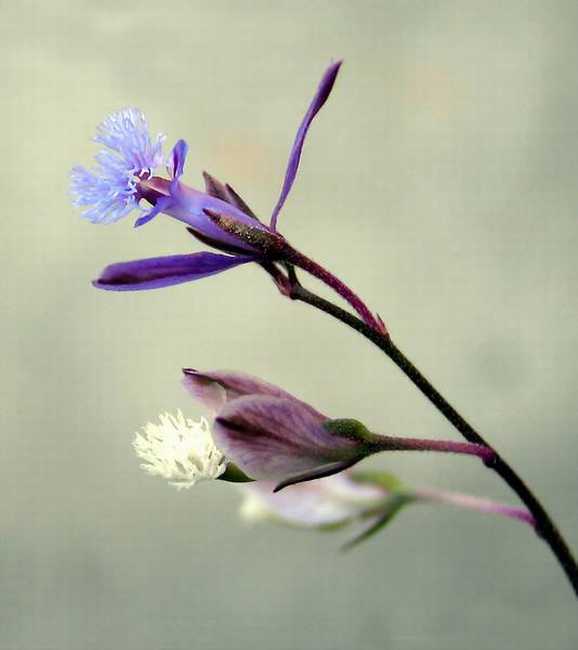
Polygalae Radix
- Introduction
- Published data
- Download
Polygalae Radix (PR) is the dried root of P. tenuifolia Willd. Or Polygala sibirica L. and is listed in the Chinese Pharmacopoeia (State Pharmacopoeia Commission, 2015 edition). PR is an important traditional Chinese medicine used to promote intelligence and tranquilize the mind as well as an expectorant and for detumescence.
Pubulications:
1. Zhang F, Li X, Li Z, et al. UPLC/Q-TOF MS-based metabolomics and qRT-PCR in enzyme gene screening with key role in triterpenoid saponin biosynthesis of Polygala tenuifolia[J]. PloS one, 2014, 9(8): e105765.
2. Liu C, Zhang A, Yan G, et al. High‐throughput ultra high performance liquid chromatography coupled to quadrupole time‐of‐flight mass spectrometry method for the rapid analysis and characterization of multiple constituents of Radix Polygalae[J]. Journal of separation science, 2017, 40(3): 663-670.
3. Li J, Wang D, Xu X, et al. Utilization of UPLC/Q‐TOF MS‐based metabolomics and AFLP‐based marker‐assisted selection to facilitate/assist conventional breeding of Polygala tenuifolia[J]. Chemistry & Biodiversity.
Details:
http://herbalplant.ynau.edu.cn/index.php?m=content&c=index&a=show&catid=100&id=191
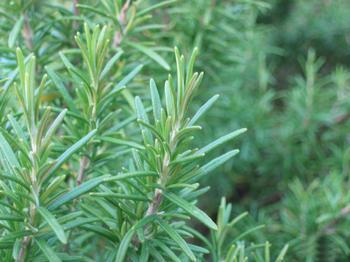
Chrysopogon zizanioides
- Introduction
- Published data
- Download
Vetiver (Chrysopogon zizanioides), a non-invasive, fast-growing grass with high biomass, can tolerate and accumulate large quantities of Pb in their tissues.
Pubulications:
Pidatala V R, Li K, Sarkar D, et al. Identification of biochemical pathways associated with lead tolerance and detoxification in Chrysopogon zizanioides L. Nash (Vetiver) by metabolic profiling[J]. Environmental science & technology, 2016, 50(5): 2530-2537.
Details:
http://herbalplant.ynau.edu.cn/index.php?m=content&c=index&a=show&catid=100&id=190

Saw palmetto
- Introduction
- Published data
- Download
The Saw palmetto or dwarf American palm (Saw palmetto [W. Bartram] Small [Arecaceae]; Syn: Sabal serrulata [Michx.] Nutt. Ex Schult. and Schult. f.; Serenoa serrulata [Michx.] G. Nichols) is a palm with bluish-green and fan-shaped leaves with a single short stipe. The fruit constitutes the herbal drug and is globose, monoseeded and turns black when mature. The species grows wild in sandy soils of southern United States. Saw palmetto extract from the fruits is the most popular and widely used phytotherapeutic agent for the treatment of symptoms related to benign prostatic hyperplasia.
Pubulications:
de Combarieu E, Martinelli E M, Pace R, et al. Metabolomics study of Saw palmetto extracts based on 1 H NMR spectroscopy[J]. Fitoterapia, 2015, 102: 56-60.
Details:
http://herbalplant.ynau.edu.cn/index.php?m=content&c=index&a=show&catid=100&id=189
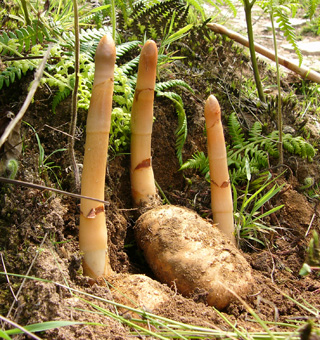
Gastrodia elata
- Introduction
- Published data
- Download
Gastrodia elata is known to possess hypoglycemic, hemostatic and immunologic activities and R. glutinosa is known for its anti-convulsive, anti-inflammatory and anti-angiogenic effects.
Pubulications:
1. Lee D K, Lim D K, Um J A, et al. Evaluation of four different analytical tools to determine the regional origin of Gastrodia elata and Rehmannia glutinosa on the basis of metabolomics study[J]. Molecules, 2014, 19(5): 6294-6308.
2. Chen S, Liu J Q, Xiao H, et al. Simultaneous qualitative assessment and quantitative analysis of metabolites (phenolics, nucleosides and amino acids) from the roots of fresh Gastrodia elata using UPLC-ESI-triple quadrupole ion MS and ESI-linear ion trap high-resolution MS[J]. PloS one, 2016, 11(3): e0150647.
3. Ma X D, Fan Y X, Jin C C, et al. Specific targeted quantification combined with non-targeted metabolite profiling for quality evaluation of Gastrodia elata tubers from different geographical origins and cultivars[J]. Journal of Chromatography A, 2016, 1450: 53-63.
Details:
http://herbalplant.ynau.edu.cn/index.php?m=content&c=index&a=show&catid=100&id=187
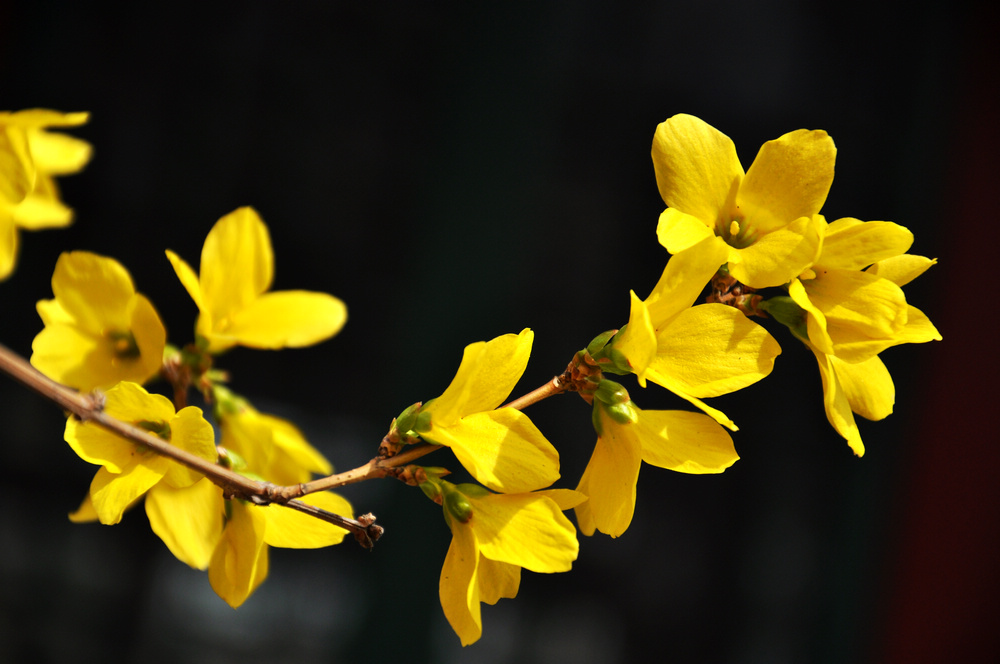
Forsythia suspensa
- Introduction
- Published data
- Download
Forsythiae Fructus , the dry fruit of Forsythia suspensa (Thunb.) Vahl in the family Oleaceae, is commonly used for treating many diseases in China, such as allergic rashes, boils, carbuncles, cancers, colds or flu-like symptoms (e.g. fever, chills, and headache), mumps, tonsillitis, urinary tract infections, etc.
Pubulications:
1. Jia J, Zhang F, Li Z, et al. Comparison of fruits of Forsythia suspensa at two different maturation stages by NMR-based metabolomics[J]. Molecules, 2015, 20(6): 10065-10081.
2. Bao J, Ding R B, Liang Y, et al. Differences in Chemical Component and Anticancer Activity of Green and Ripe Forsythiae Fructus[J]. The American journal of Chinese medicine, 2017, 45(07): 1513-1536.
Details:
http://herbalplant.ynau.edu.cn/index.php?m=content&c=index&a=show&catid=100&id=186

Abelmoschus Manihot
- Introduction
- Published data
- Download
Abelmoschus Manihot (Linneus) Medik. has been reported for its pharmacological activities including protecting liver injury, improving kidney function, treating diabetes. Abelmoschus Manihot L. is now served as the ingredient of ’HuangKui Capsule’ (commercial name), which is one of the most commonly used patent Chinese medicines in treating chronic glomerulonephritis and diabetic nephropathy.
Pubulications:
Guo J, Lu Y, Shang E, et al. Metabolite identification strategy of non-targeted metabolomics and its application for the identification of components in Chinese multicomponent medicine Abelmoschus manihot L[J]. Phytomedicine, 2015, 22(5): 579-587.
Details:
http://herbalplant.ynau.edu.cn/index.php?m=content&c=index&a=show&catid=100&id=185

Magnoliae officinalis
- Introduction
- Published data
- Download
Magnoliae officinalis Cortex (Houpo) is the dried stem bark, root bark or branch bark of Magnolia officinalis Rehd. et Wils. or Magnolia officinalis var. biloba Rehd. et Wils. (Magnoliaceae). It has been used as a TCM for more than 2000 yr for the treatment of epigastric stuffiness, vomiting and diarrhea, abdominal distention and constipation, cough and dyspnea, etc.
Pubulications:
Jiang Y, Vaysse J, Gilard V, et al. Quality assessment of commercial Magnoliae officinalis cortex by 1H‐NMR‐based metabolomics and HPLC methods[J]. Phytochemical Analysis, 2012, 23(4): 387-395.
Details:
http://herbalplant.ynau.edu.cn/index.php?m=content&c=index&a=show&catid=100&id=184
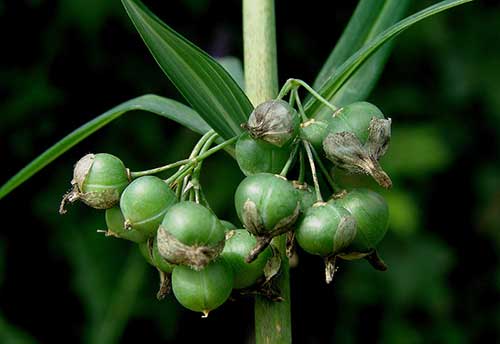
Polygonatum
- Introduction
- Published data
- Download
The rhizomes of Polygonatum species of the family Liliaceae have a long history of use in traditional medicine in Asia.1 Approximately 40 species have been identified in eastern Asia, of which are found in Korea. They have various medicinal effects by species and are used in different ways in Asian medicine. Polygonatum odoratum var. pluriflorum Ohwi and related species are commonly used as a tonic remedy as well as to treat painful conditions, cardiac exhaustion and age spots.
Pubulications:
Lee M Y, Moon B C, Kwon Y K, et al. Discrimination of Polygonatum species and identification of novel markers using 1H NMR‐and UPLC/Q‐TOF MS‐based metabolite profiling[J]. Journal of the Science of Food and Agriculture, 2016, 96(11): 3846-3852.
Details:
http://herbalplant.ynau.edu.cn/index.php?m=content&c=index&a=show&catid=100&id=183

Allium sativum
- Introduction
- Published data
- Download
Garlic (Allium sativum) is a traditional cultivated plant which is used widely in culinary foods and utilized as a folklore medicine throughout human history. Advantages and beneficial effects of garlic (Allium sativum) consumption have been widely investigated, eliciting great interests especially for medical researchers. Beneficial health effects include decreased susceptibility to heart attack and reduced glucose and cholesterol levels in blood.
Pubulications:
Huang C H, Hsu F Y, Wu Y H, et al. Analysis of lifespan-promoting effect of garlic extract by an integrated metabolo-proteomics approach[J]. The Journal of nutritional biochemistry, 2015, 26(8): 808-817.
Details:
http://herbalplant.ynau.edu.cn/index.php?m=content&c=index&a=show&catid=100&id=182

Bulbus Fritillariae ussuriensis
- Introduction
- Published data
- Download
Bulbus Fritillariae ussuriensis is the well-known food and folk medicine distributed in the Northeast Provinces of China, such as Liaoning, Heilongjiang and Jiling provinces, because it has remarkable antitussive, expectorant and antiasthmatic activities.
Pubulications:
Wang L, Yao Z P, Li P, et al. Global detection and semi‐quantification of Fritillaria alkaloids in Fritillariae Ussuriensis Bulbus by a non‐targeted multiple reaction monitoring approach[J]. Journal of separation science, 2016, 39(2): 287-295.
Details:
http://herbalplant.ynau.edu.cn/index.php?m=content&c=index&a=show&catid=100&id=181